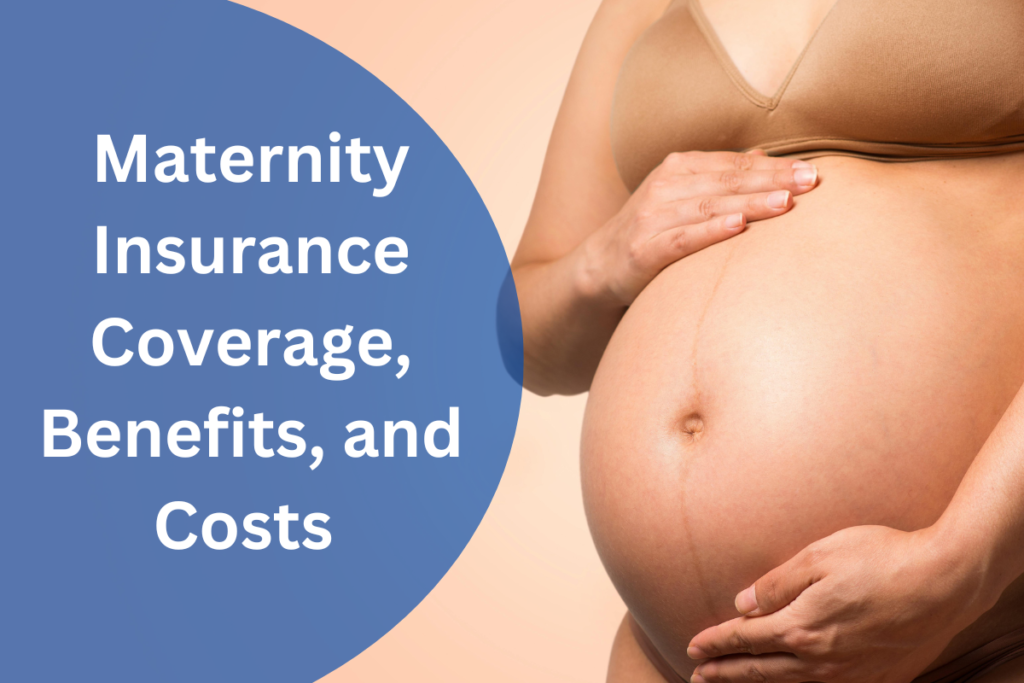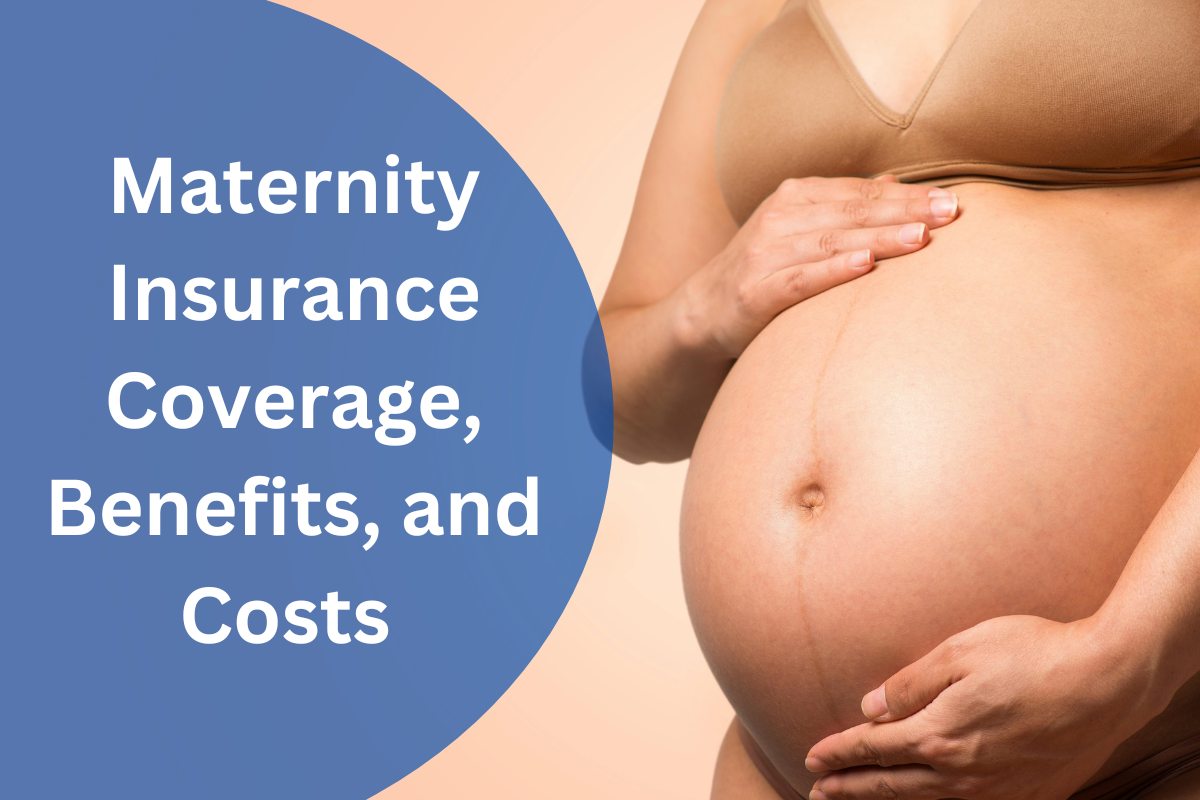Welcoming a baby into your family is a joyous but challenging experience, especially with rising healthcare costs.
Pregnancy, childbirth, and childcare are beautiful journeys that can also bring significant financial burdens.
Many couples worry about mounting hospital bills during this exciting time. Fortunately, maternity health insurance can ease these worries by covering the financial aspects of pregnancy and childbirth.
What is Maternity Health Insurance?

Maternity health insurance is a type of health insurance plan that helps cover medical expenses related to pregnancy and childbirth.
This means that if you have maternity health insurance, you won’t have to worry as much about paying for doctor visits, hospital stays, and other costs that come with having a baby.
In 2014, a law called the Affordable Care Act was introduced in the United States. This law made it mandatory for all health insurance plans to include maternity coverage.
Before this law, not all health insurance plans covered pregnancy and childbirth. This change ensured that everyone, whether buying insurance as an individual, for their family, or as part of a small group, would have access to maternity coverage.
What Does Maternity Health Insurance Cover?
Maternity health insurance typically covers:
i. Doctor Visits
This includes regular check-ups during pregnancy and after the baby is born.
ii. Screenings and Tests
Necessary tests and screenings to ensure the health of the mother and baby.
iii. Hospital Stays
The cost of staying in the hospital for delivery, whether it’s a natural birth or a C-section.
iv. Medications
Medicines that are needed during pregnancy and childbirth.
v. Newborn Care
Initial care for the baby after birth, including vaccinations and check-ups.
Enrollment and Eligibility
Understanding how and when to enroll in health insurance is crucial, especially if you’re planning to start a family.
Here’s what you need to know about enrolling in health insurance with maternity coverage:
i. Open Enrollment Period
The Open Enrollment Period typically runs from November 1 to January 15 each year. During this time, you can sign up for a new health insurance plan or change your existing plan.
This period is your primary opportunity to get coverage that includes maternity benefits. However, Open Enrollment periods can vary by state. Always check your state’s specific enrollment window to ensure you don’t miss it.
ii. Special Enrollment Periods
Special Enrollment Periods allow you to sign up for health insurance outside of the Open Enrollment Period if you experience certain life events. These events include losing your current health insurance, moving to a new area, or having a baby.
Unfortunately, becoming pregnant is not considered a qualifying event for a Special Enrollment Period. This means you cannot sign up for or change your health insurance plan just because you are pregnant.
What If You Miss Open Enrollment?
Employer’s Health Insurance: If you miss the Open Enrollment Period, you might still be able to get health insurance through your employer.
Employers typically have their own open enrollment periods, so check with your HR department for details.
i. Medicaid and CHIP
If your income qualifies, you can apply for Medicaid or the Children’s Health Insurance Program (CHIP) at any time during the year. These programs provide coverage for low-income individuals and families, including pregnant women.
ii. Marketplace Insurance
If you are eligible for a Special Enrollment Period due to another qualifying event, you can sign up for health insurance through the Health Insurance Marketplace.
Important Points to Remember
Pre-Existing Conditions: Under the Affordable Care Act (ACA), being pregnant is considered a pre-existing condition, but insurers cannot deny you coverage or charge you more because of it. This means you can still get health insurance that covers your pregnancy.
Employer’s Plan: If you don’t have insurance through your job, consider looking for employment that offers health benefits.
Benefits of Maternity Health Insurance
Maternity health insurance provides several important benefits that can help you during your pregnancy and after your baby is born.
Here are some of the key benefits:
1. Financial Protection
It helps pay for hospital stays and delivery costs, reducing the amount of money you need to spend out-of-pocket. This means less financial stress during this exciting time.
2. Newborn Coverage
Some insurance plans include coverage for the baby after birth, ensuring they get the necessary medical care, such as check-ups and vaccinations.
3. Tailored Plans
You can customize some insurance plans to better fit your specific needs and preferences. This way, you get the coverage that’s best for you and your baby.
3. Unlimited Consultations
Some plans allow you to see your doctor as many times as needed without extra costs, which is very helpful during pregnancy when frequent medical advice is often needed.
4. Easy Claims
The process of claiming insurance is often paperless and straightforward, making it less stressful to get reimbursed for your medical expenses.
5. Immediate Coverage
Certain policies start covering you from the very first day you sign up, so you don’t have to wait to get the benefits.
6. Complication Coverage
These plans can also cover complications that might arise during pregnancy or childbirth, ensuring you get the necessary treatment without worrying about the costs.
7. Tax Benefits
In some cases, you can get tax benefits for having maternity health insurance, which can save you money on your taxes.
Exclusions
It’s also important to know what is not covered by maternity health insurance. Here are some common exclusions:
1. Routine Checkups: Regular doctor visits and tests during pregnancy are often not covered. You might need to pay for these out-of-pocket.
2. Infertility Treatments: If you need treatments to help you get pregnant, these costs are usually not covered by maternity insurance.
3. Pre-existing Pregnancy: If you are already pregnant when you get the insurance, the policy usually won’t cover the costs related to that pregnancy.
4. Waiting Period: Many insurance plans have a waiting period before they start covering maternity expenses, so it’s important to get the insurance well before you plan to get pregnant.
Costs of Maternity Health Insurance
While maternity coverage is an essential health benefit under the Affordable Care Act, the costs can still be substantial even if you have insurance.
The average cost of a vaginal birth can cost around $30,000, and a C-section can be about $50,000 without insurance. The total cost for prenatal care, childbirth, and postpartum care without insurance can exceed $24,000.
However, with Insurance the cost can range from $460 to $8,224. This depends on the specifics of your insurance plan.
Typically how you pay for maternity health insurance depends on several factors which include:
1. Premiums
A premium is the monthly fee you pay to maintain your insurance coverage. Lower premiums usually mean higher out-of-pocket costs (like deductibles and copays), and higher premiums often come with lower out-of-pocket costs.
2. Deductibles
A deductible is the amount you must pay out of pocket before your insurance starts to cover non-preventive medical expenses.
Example: If your yearly deductible is $4,750, you must pay that amount for qualifying medical expenses before your insurance helps with costs.
3. Copays
Copays are fixed amounts you pay for specific medical services, such as $45 for a primary care visit or $85 for a specialist visit.
After paying the copay and meeting any deductibles, your insurance will cover the remaining costs.
4. Coinsurance
Coinsurance is the percentage of a medical service’s cost that you must pay. Example: If your insurance covers 80% of outpatient surgery, you would pay the remaining 20%.
5. Maximum Out-of-Pocket Limits
This is the most you will pay in a policy year for covered healthcare services. Once you reach this limit, your insurance covers 100% of the costs for the rest of the year.
Types of Health Insurance Plans
The type of plan you choose also affects your costs:
- Health Maintenance Organizations (HMOs): Usually the most affordable, but only cover care from in-network providers. Requires choosing a primary care physician (PCP) who will refer you to specialists.
- Preferred Provider Organizations (PPOs): Offer lower costs for in-network care but also cover out-of-network providers at higher costs. No referrals are needed for specialists.
- Exclusive Provider Organizations (EPOs): Cover costs if you use in-network providers. Larger networks than HMOs. PCP referrals may or may not be required.
- Point of Service (POS) Plans: Slightly more expensive than HMOs. Offer discounts on in-network care and cover out-of-network providers at a higher cost.
Metal Tiers
Marketplace plans are organized by metal tiers, which also affect costs:
- Bronze: Lowest premiums, highest out-of-pocket costs.
- Silver: Moderate premiums and out-of-pocket costs.
- Gold: Higher premiums, lower out-of-pocket costs.
- Platinum: Highest premiums, lowest out-of-pocket costs.
Choosing the Right Plan
The best plan for you depends on your needs and preferences:
HMO or EPO: Cost-effective if you are comfortable with using in-network providers and getting referrals from a PCP.
PPO or POS: Offers more flexibility if you prefer not to be limited to a network or want to avoid needing referrals.
How to Claim Maternity Insurance
When it comes time to use your maternity insurance, knowing the steps can help make the process smoother. Here’s a simple guide to understanding how to claim maternity insurance:
Notify Your Insurance Company
This is the first step to take. As soon as you are admitted to the hospital for delivery, notify your insurance company. This is important because it starts the claim process.
Types of Claims
There are two main types of claims you can make with maternity insurance: cashless claims and reimbursement claims.
1. Cashless Claims
With a cashless claim, the insurance company pays the hospital directly.
How It Works
- When you are admitted, inform the hospital that you want to use your insurance for a cashless claim.
- The hospital will then send all the necessary documents to your insurance company for approval.
- Once approved, the insurance company will pay the hospital directly for covered expenses.
Benefit: You don’t have to pay out of pocket for covered medical costs at the time of treatment.
2. Reimbursement Claims
With a reimbursement claim, you pay the hospital first and then get repaid by your insurance company.
How It Works
- Pay all the hospital bills at the time of discharge.
- Collect all the necessary documents such as bills, receipts, and medical reports.
- Submit these documents to your insurance company.
- The insurance company will review the documents and then repay you for the covered expenses.
Benefit: You get reimbursed for the expenses after the insurance company processes your claim.
Steps to Make a Claim
1. Inform the Insurance Company: Notify your insurer as soon as you are admitted to the hospital for delivery.
2. Cashless Claim Process
- Tell the hospital you want a cashless claim.
- The hospital sends the required documents to the insurer.
- The insurer approves and pays the hospital directly.
3. Reimbursement Claim Process
- Pay your hospital bills at the time of discharge.
- Collect all the necessary documents (bills, receipts, medical reports).
- Submit these documents to your insurance company.
- The insurer reviews the documents and reimburses you for the covered expenses.
Tips for a Smooth Claim Process
- Keep Documents Ready: Ensure you have all the necessary documents ready and organized. This includes hospital bills, receipts, and medical reports.
- Follow-up: Stay in touch with your insurance company to keep track of your claim status.
- Know Your Policy: Understand what your policy covers and the claim procedures to avoid any surprises.
Conclusion
Maternity insurance provides essential financial support during pregnancy and childbirth, helping you focus on preparing for your new baby without the stress of medical expenses.
Be sure to review policy terms and coverage details before purchasing to ensure adequate protection.
